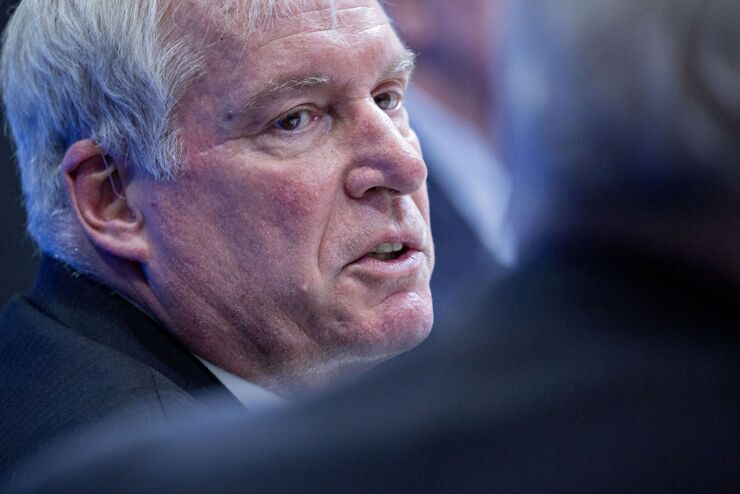WASHINGTON — The Federal Reserve should consider raising a required capital buffer when the economy is in good shape rather than easing capital rules to limit the impact of a downturn, according to the head of the Federal Reserve Bank of Boston.
The countercyclical capital buffer — often called the CCyB — is a tool that allows the Fed to require banks with more than $250 billion of assets or $10 billion of nonbank liabilities to hold additional capital while economic conditions are strong to counteract the elevated potential for riskier lending.
But the Basel III-related rule has never actually been used in the United States, with Fed governors consistently voting over the years to maintain the buffer level at zero percent.
Boston Fed President Eric Rosengren proposed Monday that going forward, regulators should reconsider actually turning the buffer on while the economy is strong. Although Rosengren is not a member of the Federal Reserve Board of Governors, which votes yearly on whether to turn on the CCyB, his views could influence others on the board.

“Rather than disrupt bank capital planning and rely on temporary relief from capital regulations, the CCyB provides a ‘shock absorber’ that, if appropriately implemented, would allow borrower financing to continue without these temporary extraordinary and less predictable measures,” he said during remarks at an event hosted by the Newton-Needham Chamber of Commerce.
The Fed took a number of steps at the onset of the coronavirus pandemic to ensure that banks had sufficient capital to continue lending throughout the crisis. Those included restricting dividend payments and easing the supplementary leverage ratio, which requires banks with more than $250 billion of assets to maintain an extra cushion of high-quality capital against their total assets.
“While these measures were needed at the time, and thus appropriate, in my view they reflect a capital regime that is not sufficiently flexible during economic downturns,” said Rosengren. “Investors in banks, and bank management teams, would prefer to avoid the attendant uncertainty around capital planning, and bank regulators would prefer to not suspend bank regulations in economic downturns.”
His views on the CCyB differ from those of Fed Vice Chairman for Supervision Randal Quarles, who has long said that the CCyB is effectively turned on in the U.S. because bank capital levels are already so high.
During a March event at the Peterson Institute for International Economics, Quarles noted that the Fed’s actions to ease the SLR were a “quasi-turning down” of the CCyB.
“When you look at some of those other jurisdictions that were in a position to have turned on their countercyclical capital buffer going into this stress and then turned it down, it didn’t actually prove to be that useful in creating the space for those institutions to continue to lend through the crisis,” Quarles said.
Before the COVID-19 crisis, Fed Gov. Lael Brainard was a vocal advocate for activating the CCyB, arguing that it could build resilience in the banking system.
“One of the roles for independent regulatory bodies such as the Federal Reserve is to serve as a counterweight,” she said





